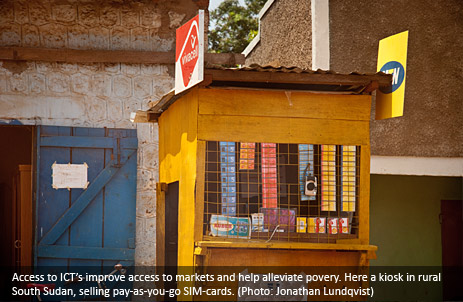Though the fight is less Batman and more committee, the UNs latest report on how ICTs can be used to alleviate poverty is interesting and highlights a very important role for technology to play. There are no guarantees that improved access to ICTs leads to poverty reduction. Information accessed through ICTs has to be relevant and appropriately presented to benefit the poor, reflecting the needs, skills and capabilities of the latter.
Better information – better decisions
Poor people often lack access to information that is vital to their lives and livelihoods, including weather reports, market prices and income-earning opportunities. Such lack of information adds to the vulnerability of the people concerned. In terms of livelihood strategies, information plays a dual role: informing and strengthening the short-term decision-making capacity of the poor themselves; and informing and strengthening the longer-term decision-making capacity of intermediaries that facilitate, assist or represent the poor. The contribution of ICTs to poverty reduction through enterprise lies in their power to give poor women and men access to improved information and better communications to help them build livelihood assets.
Evidence-based insights
Far more needs to be understood about the emerging new roles and impacts of ICTs in poor communities. As few empirical studies have looked specifically at this question, the evidence base remains weak. By placing the spotlight on this area, this the UN-report points to the need for more attention in terms of research and policy analysis to help identify the best ways forward in order to seize maximum development gains from the new ICT landscape.
Wireless is the way forward
Access to most ICTs continues to grow in poor countries, but at very different rates depending on the technology. Growth also varies by region and income level. Access to fixed telephone lines in the poorest countries is extremely low and almost negligible in rural areas. By contrast, mobile access deepens each year as networks extend to more of the formerly unreachable. After a radio or a television set, the next most likely ICT device found in poor households is a mobile phone.
The use of mobile phones to access the Internet is growing rapidly and may eventually become more prevalent in developing countries than in developed countries. In East Africa, for example, Internet access via mobile phones now far exceeds fixed Internet subscriptions. This underscores the potential for mobile phones to transform Internet use in the developing world.

